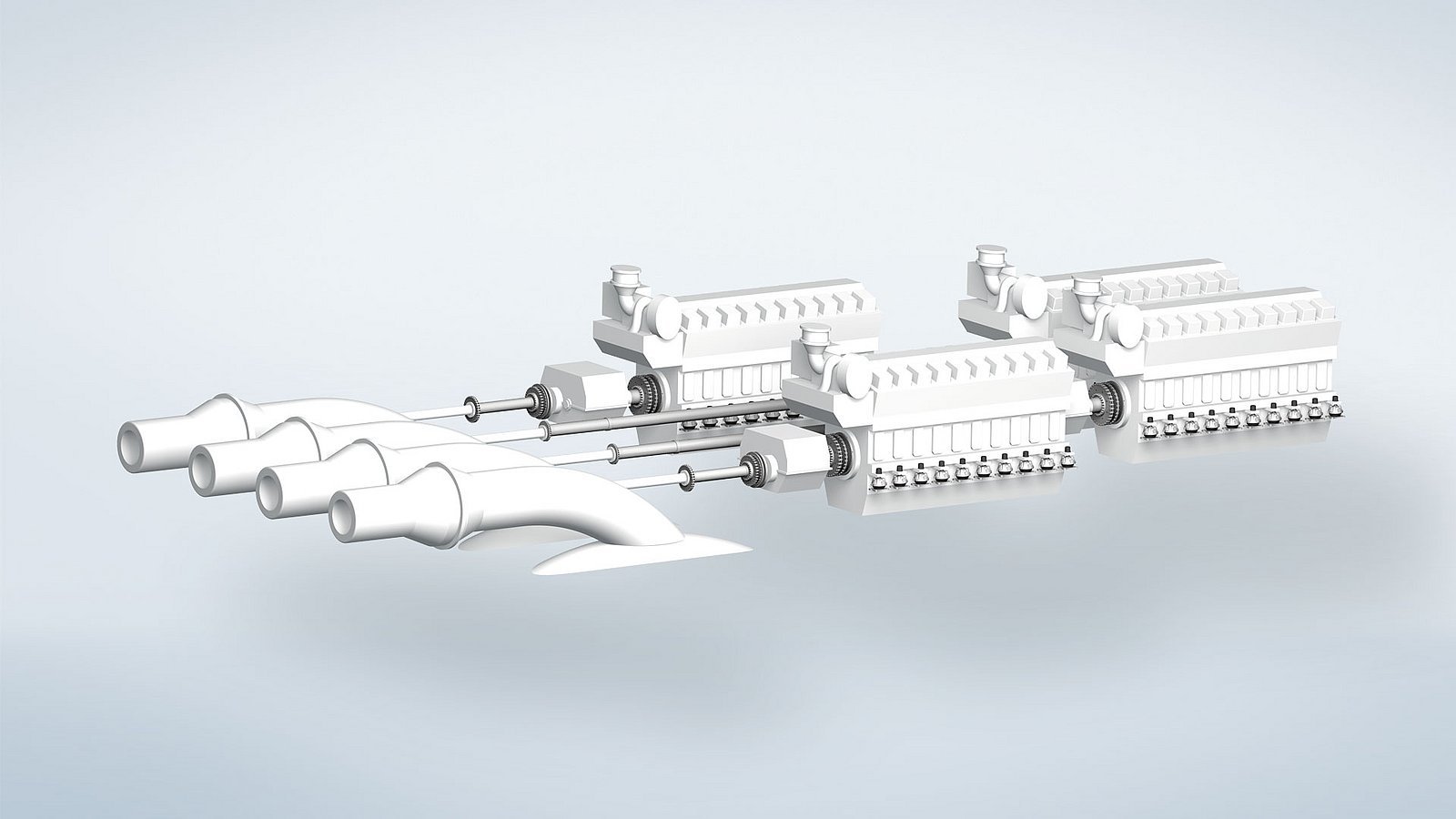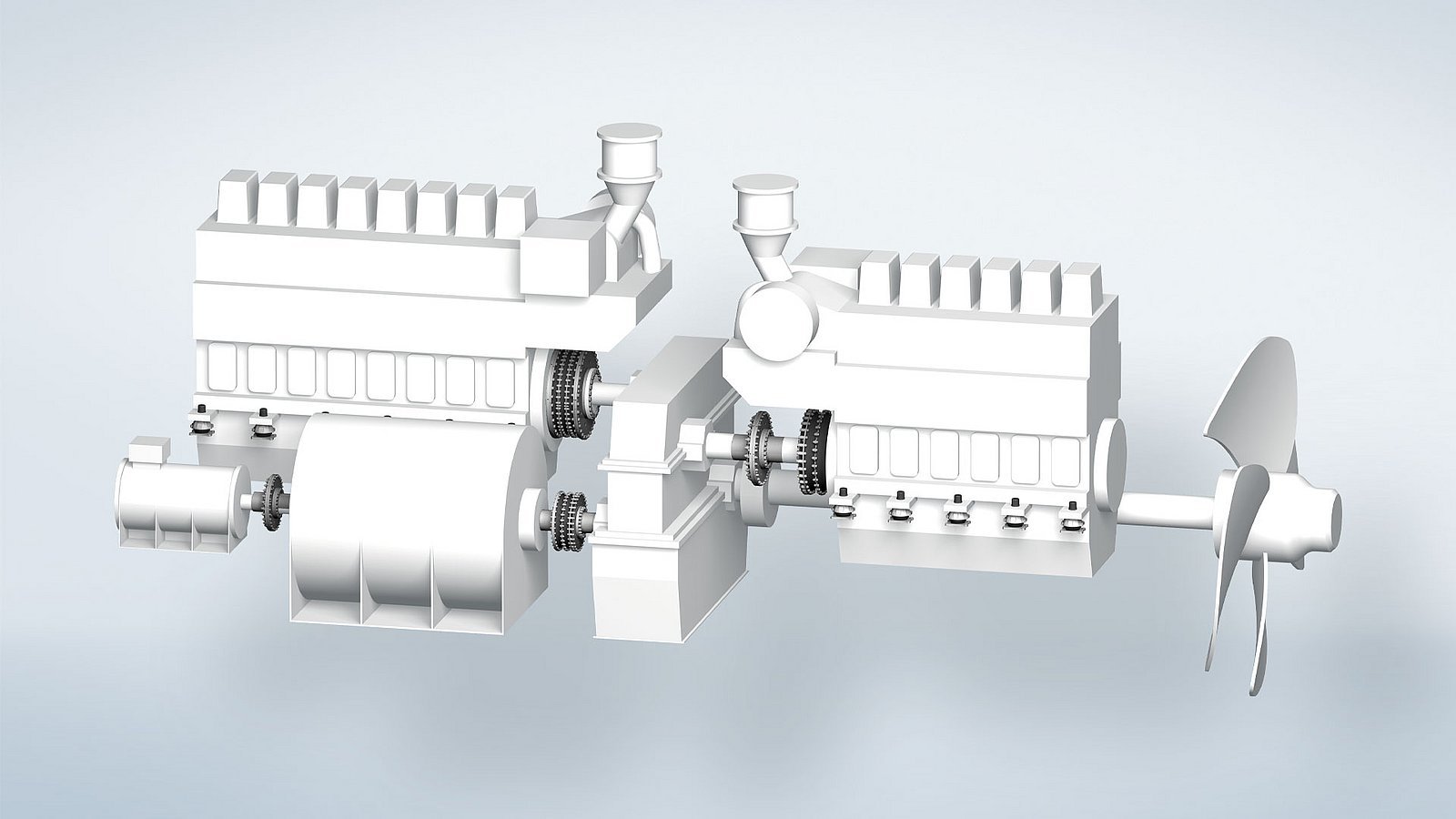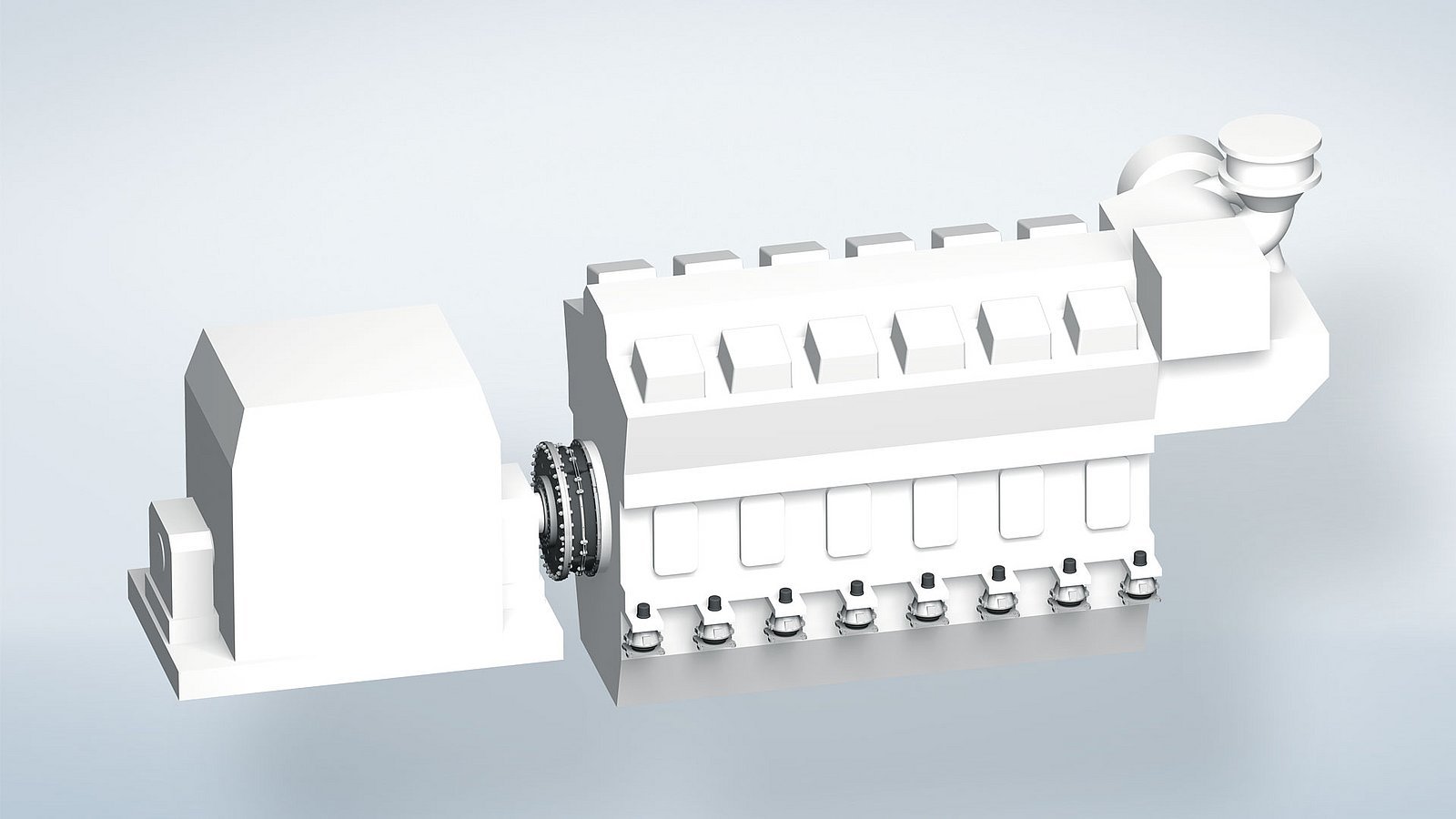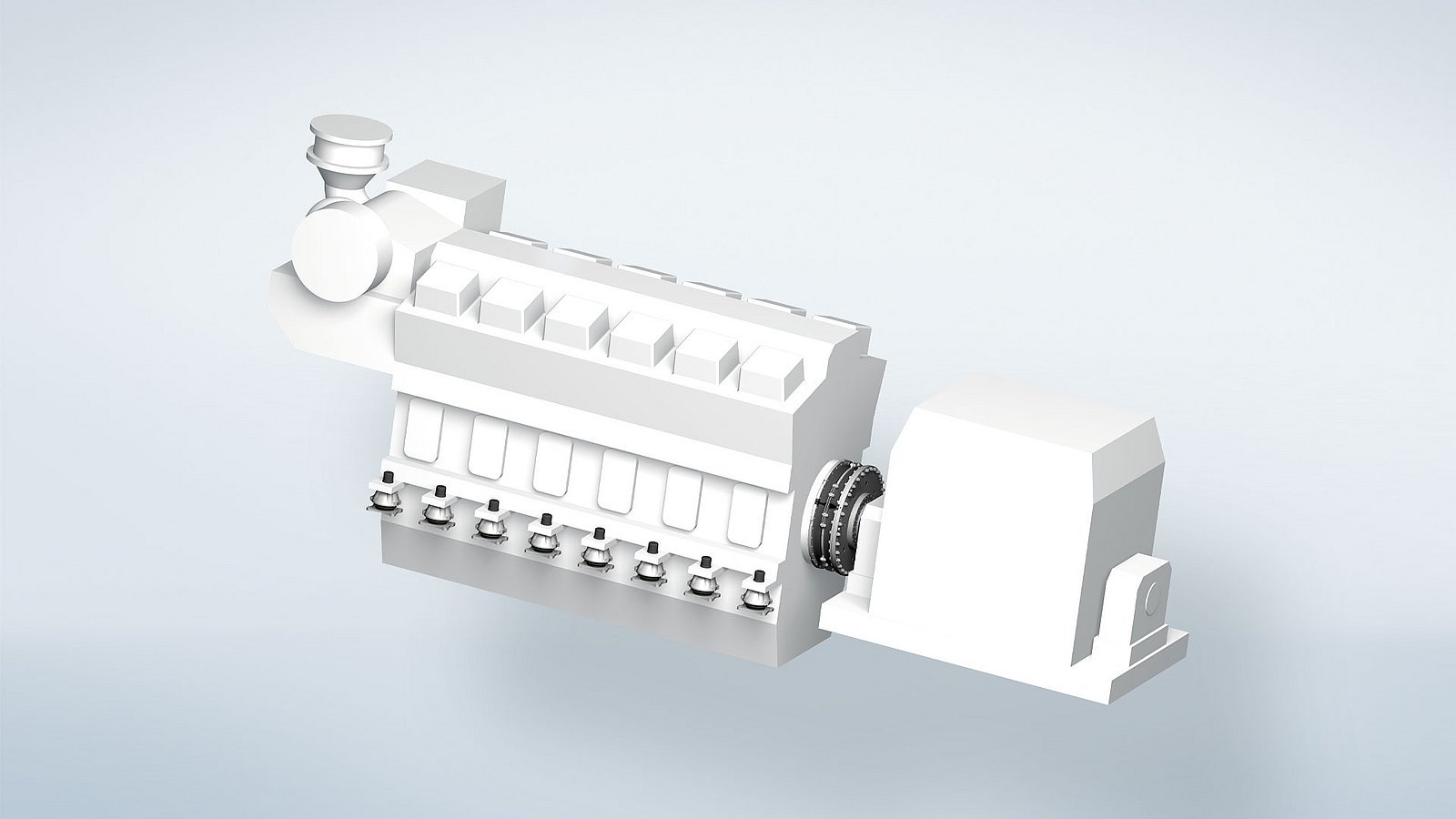
Jet Drive
Commercial use places high demands on fast ferry drives with regard to high power at high efficiency, which also inevitably leads to the requirement for less weight. Today, for reasons of comfort, one opts mainly for elastically mounted four-stroke diesel engines with high power density, as well as waterjet drives. The requirement for weight optimization is also valid for all other components of these diesel-mechanical drives. Due to their relatively low specific weight, composite shaft lines allow longer distances between the bearings and therefore less bearing points in comparison to heavier steel shaft lines, thereby saving significant weight. This is also true for the shafts themselves.

Multi-Engine, Diesel-Mechanic Four-Stroke Drive – RoPax Ferries
The large drive units in RoPax ferries are characterized by a high complexity, which permits a high level of variation in the operating profiles, for the greatest possible profitability. Mostly diesel-mechanical, four or more diesel engines drive two or more controllable pitch propellers via one double transmission each. In addition, generators are built in through the PTO stage of the main gearbox or at the front end of the engine, to meet the high electricity requirements on board. Thereby the PTO transmission is also set up as a PTI; i.e. the generator works as an electric motor for maneuvering. In terms of torsional vibration, due to the arrangement of the drive line components, as well as several possible drive variations, high demands are placed on the flexible couplings.

Compact Diesel-Electric Drive – Cruise Ships
Today diesel-electrical drives are found almost exclusively in cruise ships, mostly in combination with the highly maneuverable POD drive. The power supply required for the electric motors is provided by means of high-performance diesel generators. The compact design evident here (diesel engine and generator are located in the same compartment) not only demands an optimum torsional stiffness level from the flexible coupling to adjust the torsional vibration state, but also a high misalignment capacity within a compact design. Added to this comes the necessity to reduce the amplitude of the structure-borne noise between the engine and generator.

Separated Diesel-Electric Drive Arrangement – Cruise Ships
For ship design or safety-relevant reasons, the arrangement of compact gensets is not always possible. Often the four-stroke diesel engines are located separately from the generators in different compartments, separated by a bulkhead. In such cases, tailor-made, highly flexible coupling solutions are required, in order to bridge the distance between engine flywheel and generator, as well as make adjustments for torsional vibrations and absorb large displacements. Here, VULKAN offers specialised, cardanic solutions based on the standard RATO coupling portfolio, which meet all criteria in good measure.
